Imaging Water: A Conversation with the Smithsonian's Carol Huh
Imaging Water: A Conversation with the Smithsonian's Carol Huh
Imaging Water: A Conversation with the Smithsonian's Carol Huh
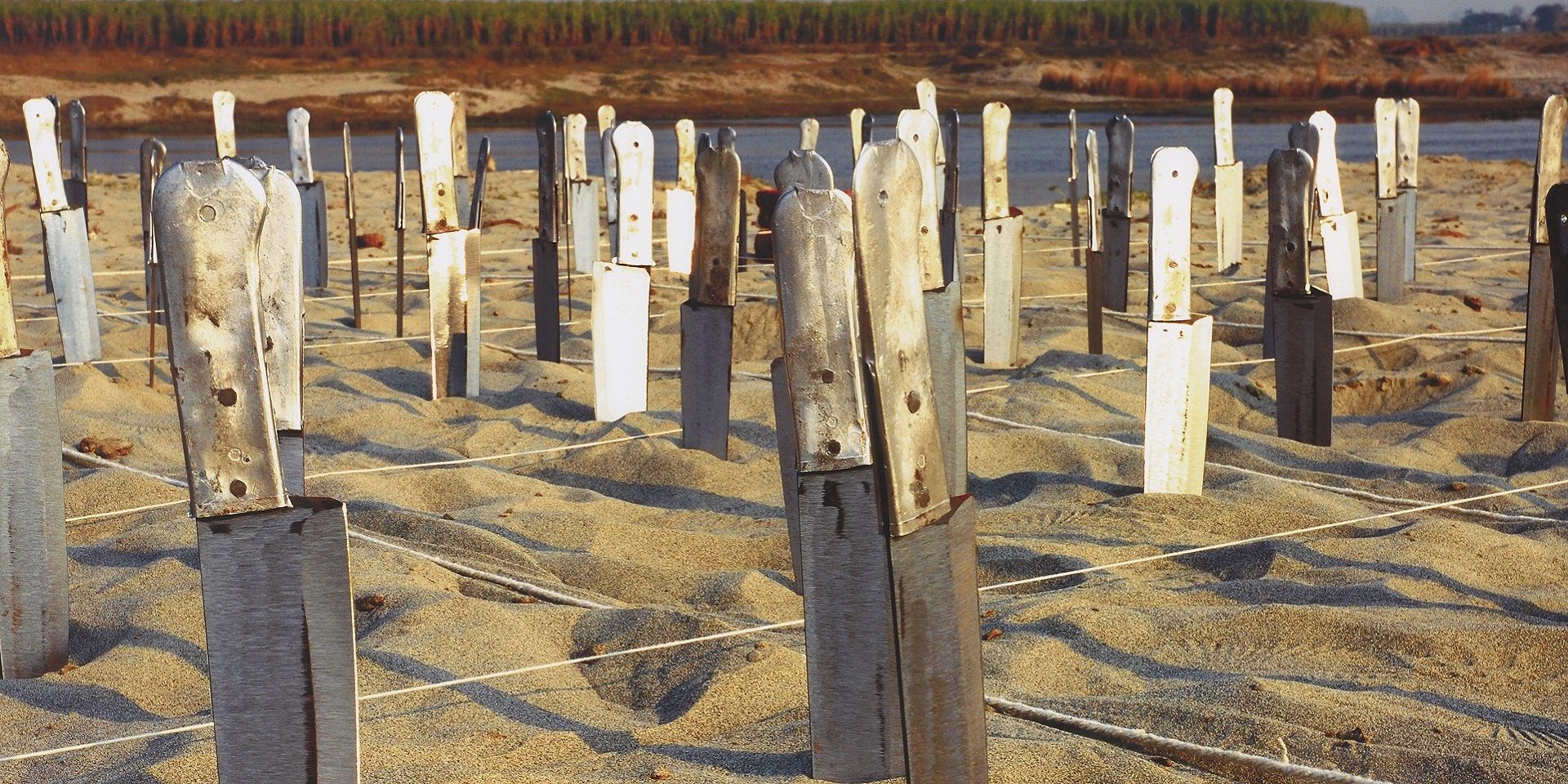
Ravi Agarwal, Riverbank I (detail), 2007, Inkjet print, H x W (unframed): 106.7 × 159.7 cm (42 × 62 7/8 in), Gift of Drs. Umesh and Sunanda Gaur, Arthur M. Sackler Gallery
For the Smithsonian's National Museum of Asian Art's (NMAA) centenary celebrations, Carol Huh curated a show on contemporary Indian photography titled, 'Unstill Waters', which focuses on landscape and water as natural resources, aesthetic objects and shifting, unstable screens that reflect our preoccupations with the environment in our daily lives.
Much like the NMAA's painting exhibition, 'A Splendid Land: Paintings from Royal Udaipur', which was discussed with its curator Debra Diamond in last month's edition of the Journal, this show too aims to create a sensorial, affective experience of watching, sensing, hearing and feeling the landscapes created by water and water-use in India today. Huh spoke briefly with the editors of the DAG Journal, discussing the origins and design of the show, among other things.

Detail from a work by Ravi Agarwal for Unstill Waters: Contemporary Photography from India, Dec. 10, 2022–June 11, 2023, National Museum of Asian Art, Smithsonian Institution, Washington, D.C. Photo: Colleen Dugan
Q. Can you tell us about how this show was put together and a little bit about the Umesh and Sunanda Gaur Collection that informed it? How did you decide to put it in conversation with the National Museum of Asian Art’s ‘A Splendid Land: Paintings from Royal Udaipur’?
Carol Huh: So it's a rather simple and maybe well-worn story, but in 2018-19, Umesh and Sunanda generously donated their collection, and we were already in the process of talking about their collection, because I had met them a couple of years earlier. As collectors, what I found quite interesting is that they are very much focused and dedicated to teaching. They are not just collecting to collect. They're collecting also to put together exhibitions in their home and bring together professors, curators, academics to get the works out into the museums so that they can really educate students and the public. And with that mission in mind, they thought that a museum like ours—especially, a public institution—was the next logical step for their photography collection. But they really wanted to make sure that we put the works on view. And as we discussed various exhibition ideas with them, it became clear that they were also keen on having multiple exhibitions, but not the kinds that celebrated the collectors or the collection or the gift; but rather, a series of smaller exhibitions that looked at ideas, so that the emphasis was on themes or ideas rather than putting out the collection as a whole.
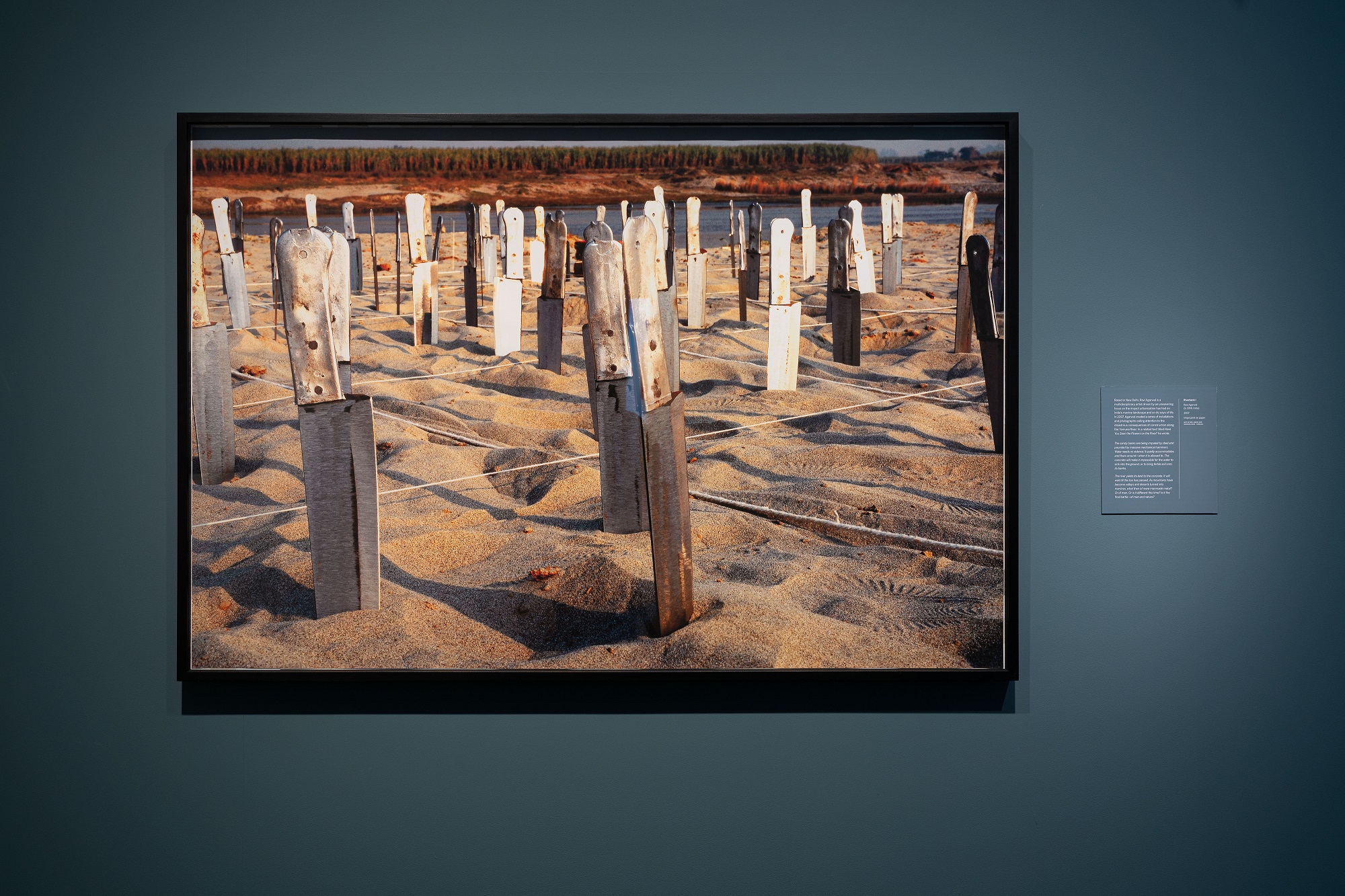
A view of a work by Ravi Agarwal for Unstill Waters: Contemporary Photography from India, National Museum of Asian Art, Smithsonian Institution, Washington, D.C. Photo: Colleen Dugan
So that really opened up the possibility of thinking creatively about the collection and when Debra (Diamond) and Dipti (Khera)—(co-curators of ‘A Splendid Land: Paintings from Royal Udaipur’)—were working on the Udaipur exhibition and also thinking about some of the water resource environmental concerns and how the works could be relevant in discussing such concerns, which are also such contemporary issues, I looked at the Gaur collection and started to zone in on landscape representation. Certainly, Atul Bhalla and Ravi Agarwal's work came immediately to mind. But then I looked at it a bit broadly, and thought about how landscape representation in the medium of photography becomes a means for artists to both inform and mediate that sense of place, and also for certain artists more prominently to think about the environment, to think about those resource issues. So that's the summary, the short summary.
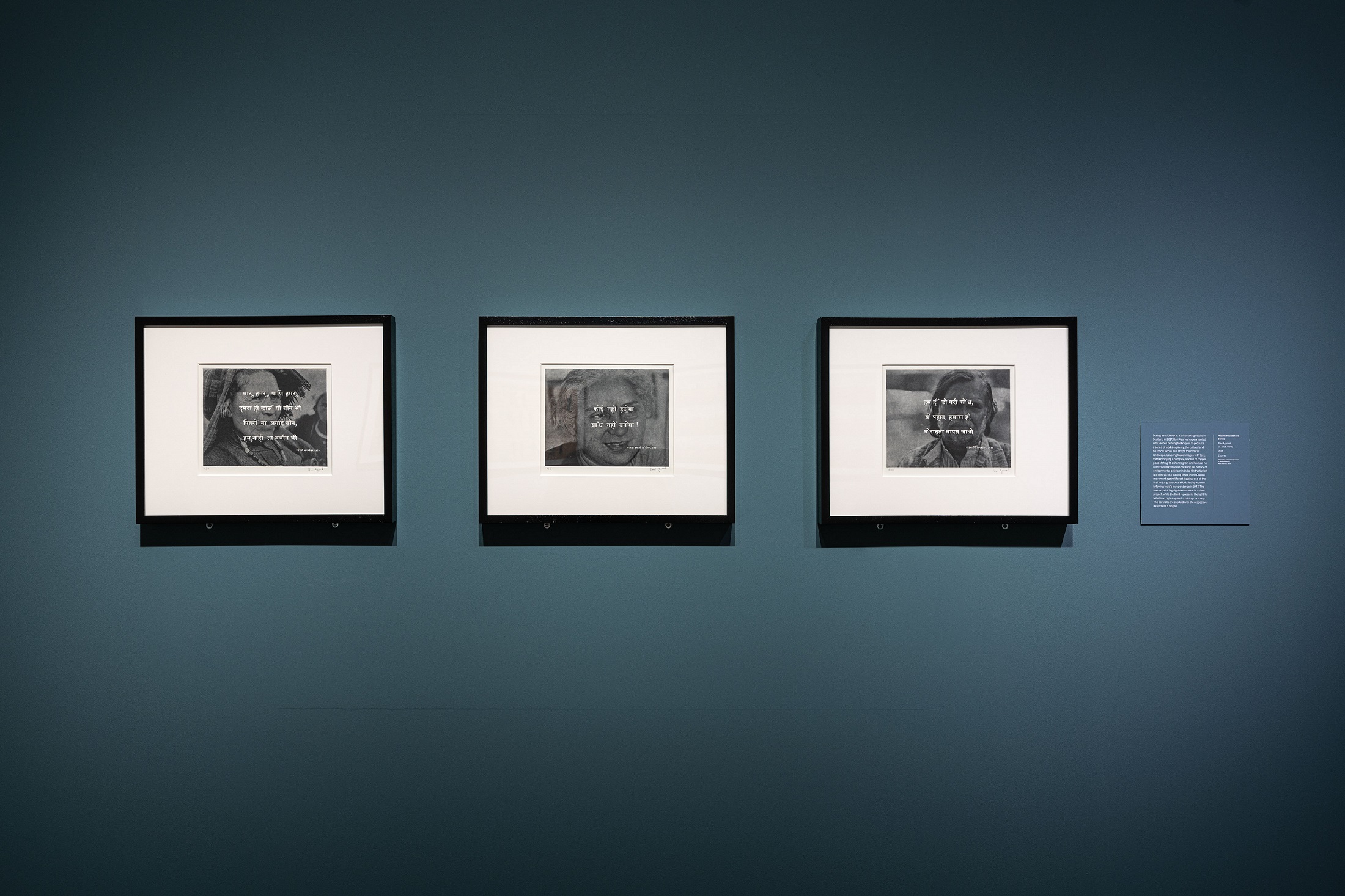
A view of works by Ravi Agarwal for Unstill Waters: Contemporary Photography from India, National Museum of Asian Art, Smithsonian Institution, Washington, D.C. Photo: Colleen Dugan
Q. Considering the fact that the show has been put on for a largely diverse American viewership in Washington D. C., how does this show on contemporary Indian photography—and thereby a representation of a slice of contemporary Indian reality—challenge existing image discourses as many curatorial projects seek to do today?
Carol: I'm not sure that I was seeking to challenge anything more than just to make sure that we continue to bring to light the work of artists that are based in India. I think that's a primary goal for me given our location and especially our prominent location and the number of general visitors that we get as well as a more informed public, who are more knowledgeable consumers, if you will, of Asian art and culture.
I am always motivated by making sure that we are a space for that public to encounter the works of artists working in and offering perspectives on the different areas that are of concern in our museum. So in this case I think it's important for the public to have these perspectives and to have this encounter, and perhaps be provoked to learn more about the artists and their particular context. That is where I tend to start from.
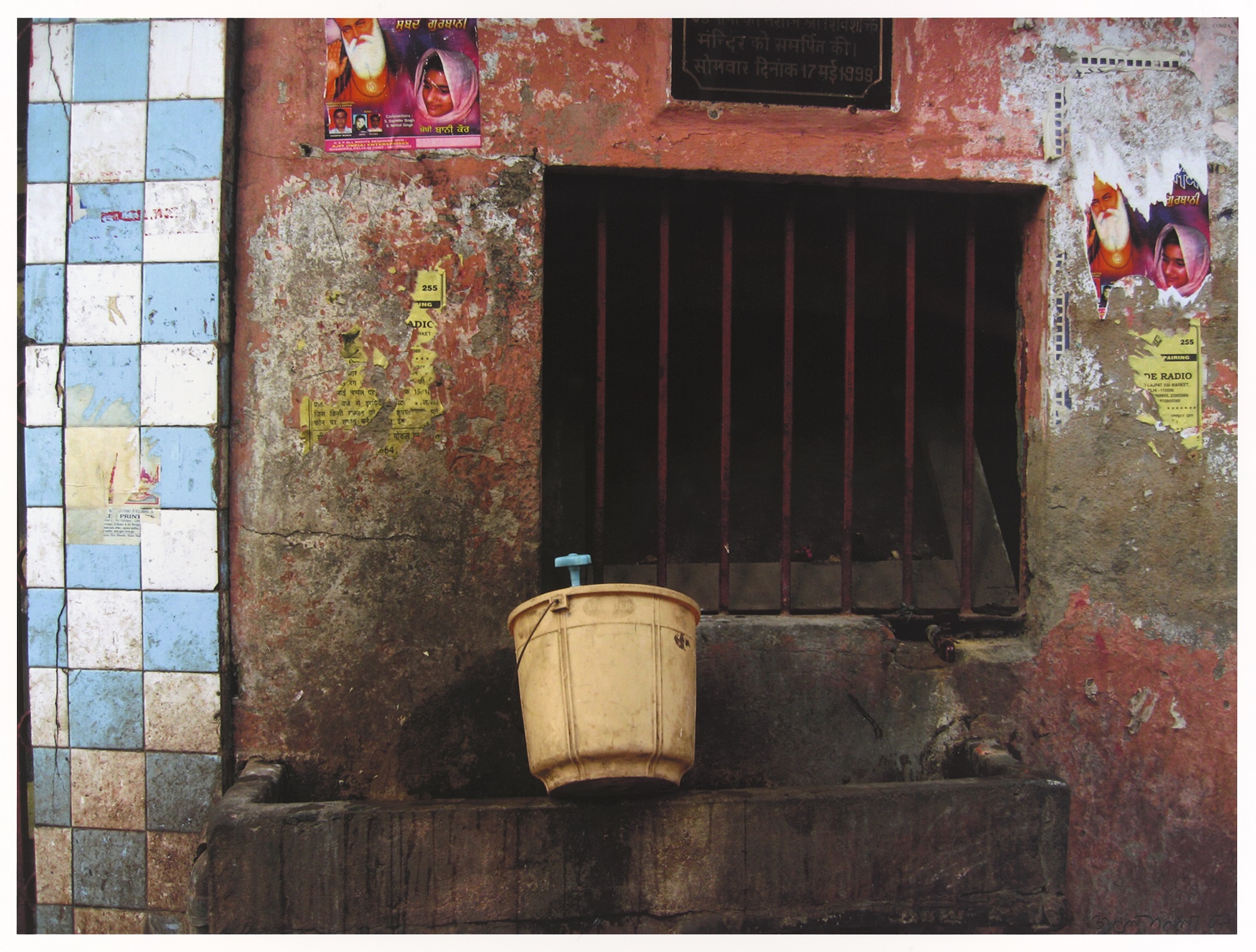
Atul Bhalla (b.1964), Piaus I (1 of 20 prints), Inkjet prints on archival Hahnemüle paper, H x W (each unframed): 30.5 × 40.6 cm (12 × 16 in.), 2006, Arthur M. Sackler Gallery, Smithsonian Institution, Washington, D.C., Gift of Drs. Umesh and Sunanda Gaur
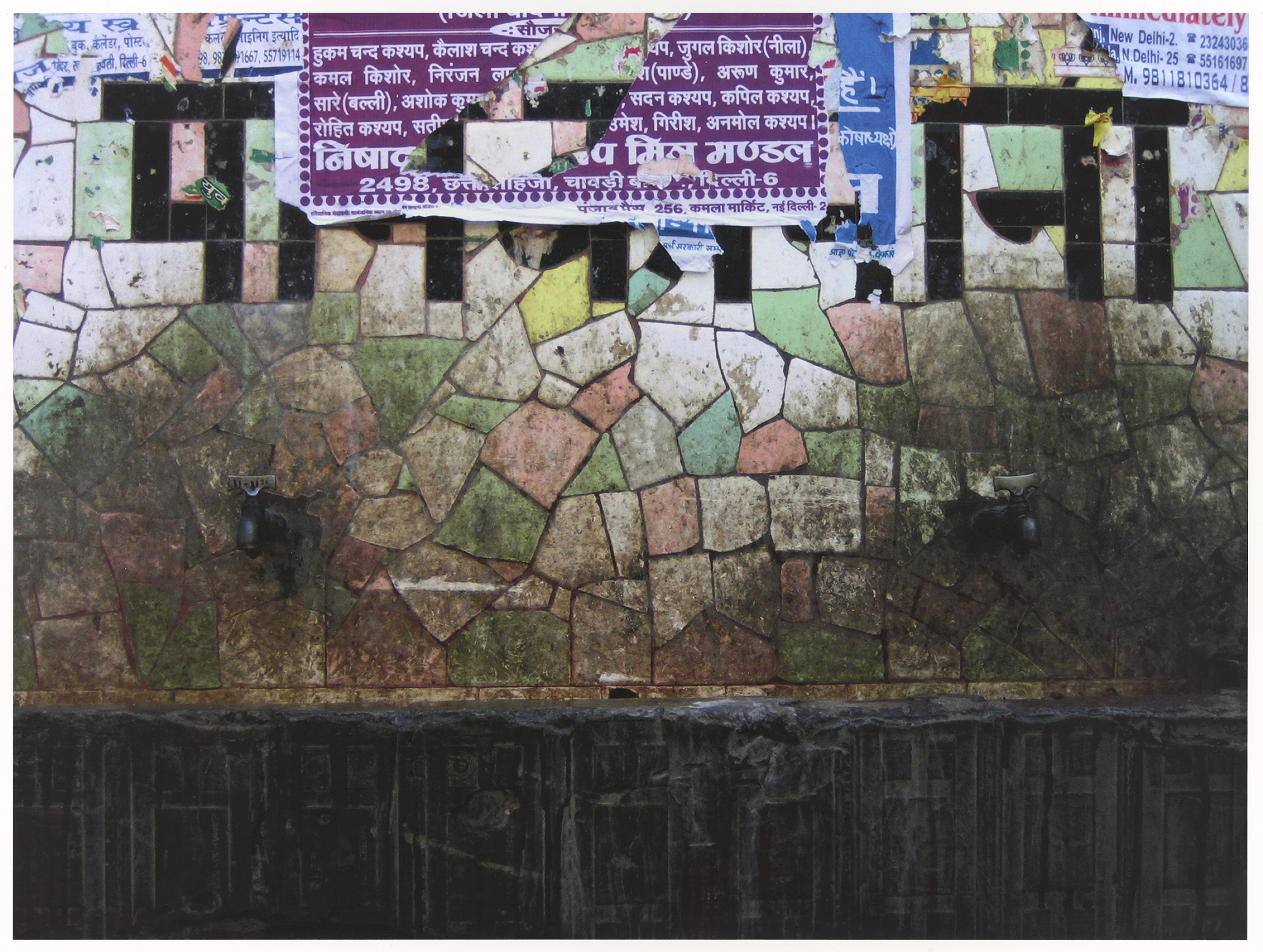
Atul Bhalla (b.1964), Piaus I (1 of 20 prints), Inkjet prints on archival Hahnemüle paper, H x W (each unframed): 30.5 × 40.6 cm (12 × 16 in.), 2006, Arthur M. Sackler Gallery, Smithsonian Institution, Washington, D.C., Gift of Drs. Umesh and Sunanda Gaur
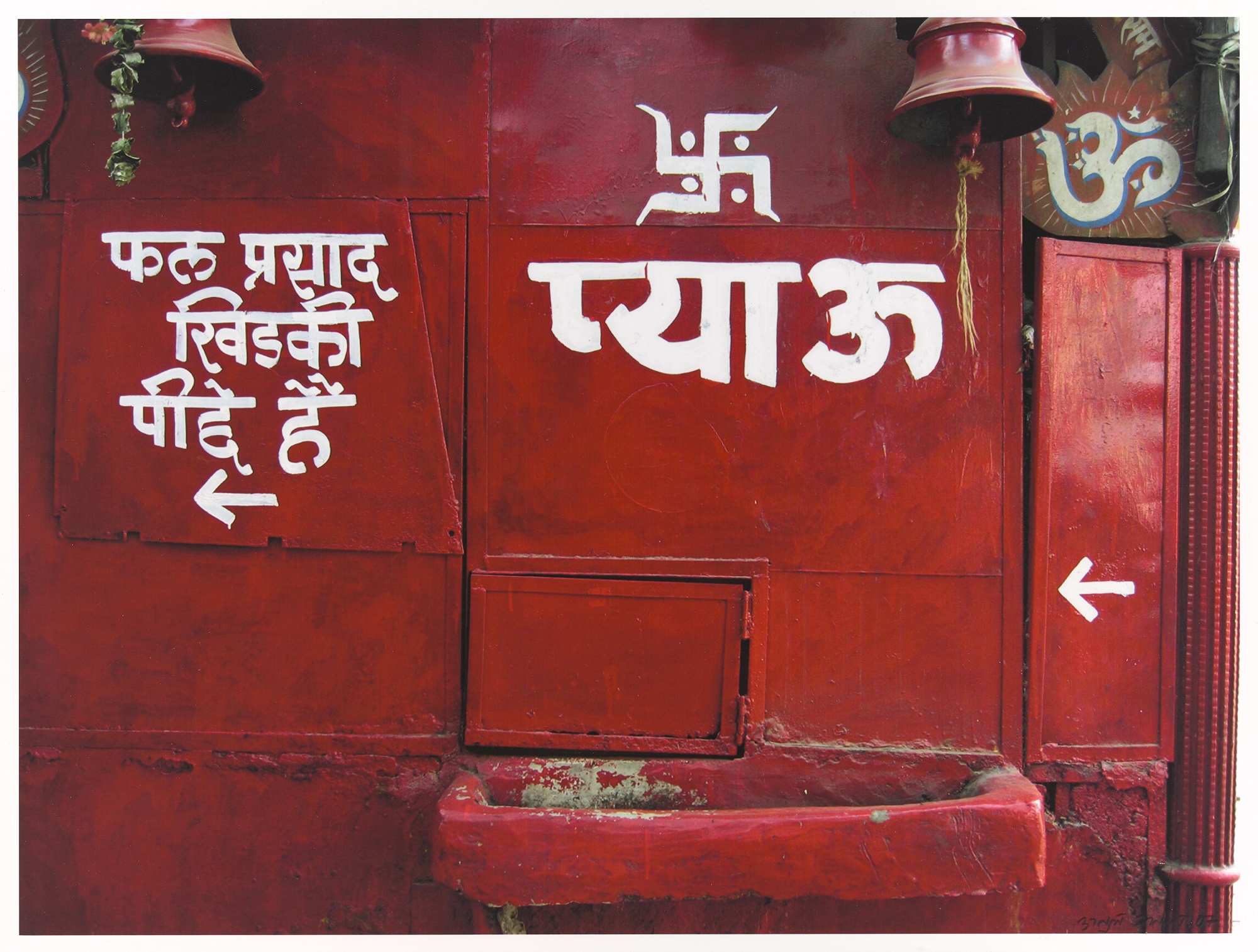
Atul Bhalla (b.1964), Piaus I (1 of 20 prints), Inkjet prints on archival Hahnemüle paper, H x W (each unframed): 30.5 × 40.6 cm (12 × 16 in.), 2006, Arthur M. Sackler Gallery, Smithsonian Institution, Washington, D.C., Gift of Drs. Umesh and Sunanda Gaur
Q. The photographs in the show bear traces of these twinned discourses on photography, the evidentiary framework and a more poetic description of space and place. How were you negotiating between these two? Do you think of the show as producing new knowledge about these practices, or as a source of creative inspirations to think about these spaces?
Carol: Well, what I tried to do is to create some formal relationships and to think about the medium itself, the tangible material and the physical aspects of the works, along with the informative; and the kind of mediation that these artists are doing through their choice of medium. With Ravi Agarwal we were talking about the ways in which he likes to think of pushing at the boundaries of the documentary. They all use documentary and ‘straightforward’ photography. The six-minute video creates a different kind of multi-sensorial address, experience and sense of place. For example, in the video, you hear a soundtrack, but as you watch, there is a very subtle sense of being unsettled, seeing the film upon the water. It employs a spare text that relates a simple memory, a personal memory: and they all come together to take you to a different place and to prompt you to think about what it is that you're looking at and hearing, and perhaps the very subtle disjunct between the reality that you’re seeing and what you are being lulled into hearing. The other photograph—of the riverbank—is a photograph of an installation that he did. So we have two layers of expression, if you will.
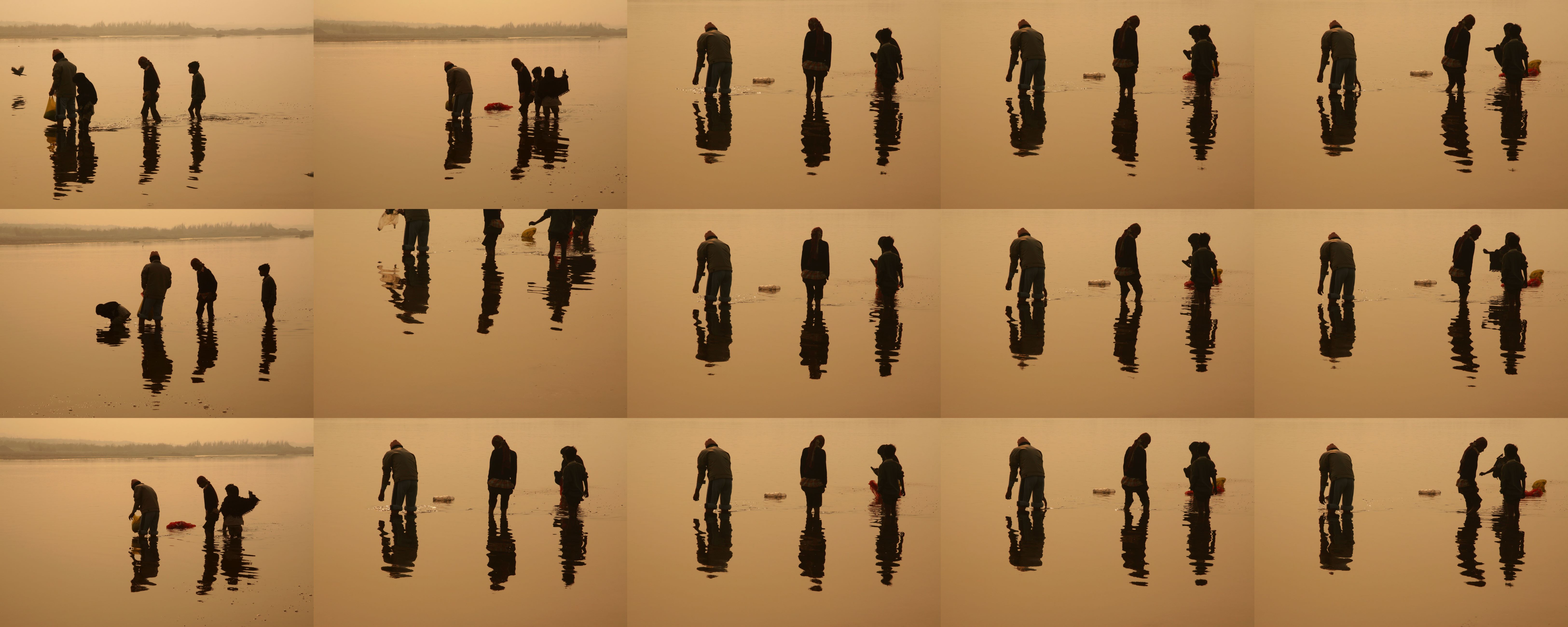
Atul Bhalla (b. 1964, India), Yamuna Morning IV, Inkjet print on archival Hahnemüle paper, 2007, Gift of Drs. Umesh and Sunanda Gaur.
And then on the other side of the wall are the three copper plate etchings. If you are attuned to looking at surfaces and the different ways of working with two dimensions or paper, then you get the sense of the different textures. And then, as you go through Atul Bhalla’s Piaus works and then Yamuna Morning, then Gigi Scaria—in that suite of three images, there's a subtle difference in the notion of seriality or the serial image. Atul has those images which, with their colours and patterns, is a familiar sight in Indian photography—especially the Intense coloration—but what I love about his series is that it focuses in on a particular object or a particular type of object in repetition, so that those colours and textures throw into relief how degraded those piaus are and how much of it has rotted away. So again, there's this kind of juxtaposition that is created through the straightforward means and then in the manner of its presentation.

View of works by Atul Bhalla, from Unstill Waters: Contemporary Photography from India, National Museum of Asian Art, Smithsonian Institution, Washington, D.C. Photo: Colleen Dugan
Atul Bhalla’s Yamuna Morning 4, presents a seriality that is almost cinematic in its representation. It has a different kind of narrative that unfurls in its own pace and its own mood. There is an absence of the horizon, a different kind of focus, and a sense of perspective as if you're standing in the water observing from a distance. These are all straightforward images, but they're all being worked with and the documentary image itself becomes a medium in different ways of compositing and presenting that experience and that image itself.
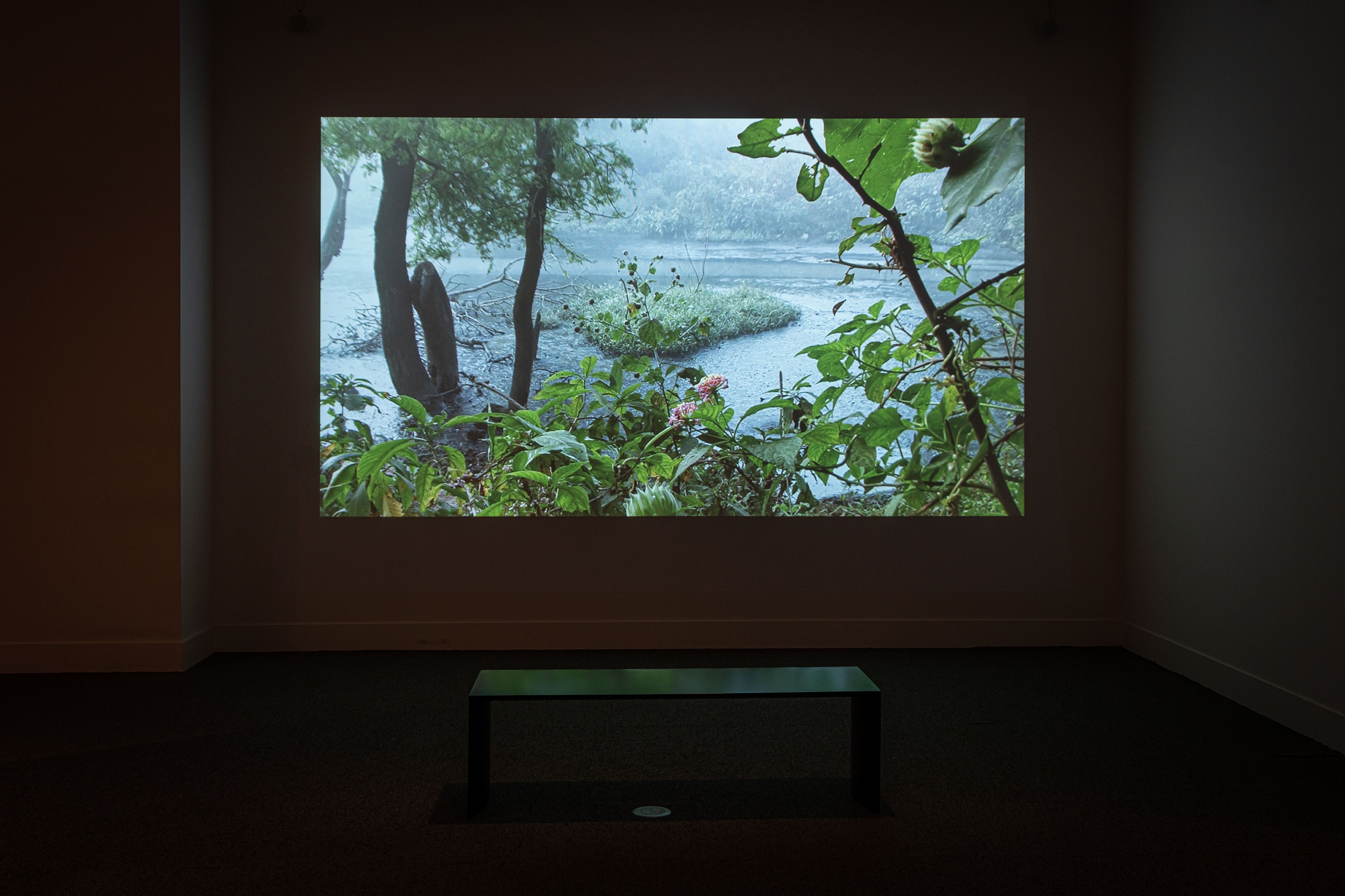
Detail from a work by Ravi Agarwal for Unstill Waters: Contemporary Photography from India, Dec. 10, 2022–June 11, 2023, National Museum of Asian Art, Smithsonian Institution, Washington, D.C. Photo: Colleen Dugan
The two Ketaki Sheths are classic street photography. As documentary images in the hands of someone like Sheth, however, they only appear to be straightforward at first glance. But they reward a practice of close looking where you start to see the different vectors of the glances (between the people in the images) and the fact that these are moments that are extracted from a larger, perhaps more chaotic, environment, especially since she so consciously works in black and white, in contradistinction to Raghubir Singh, who was one of her mentors. They're quite simple and straightforward, but the layers of activity, mood and individual subjects are quite complex. The straightforward image composition belies a more complex reading of the situation.
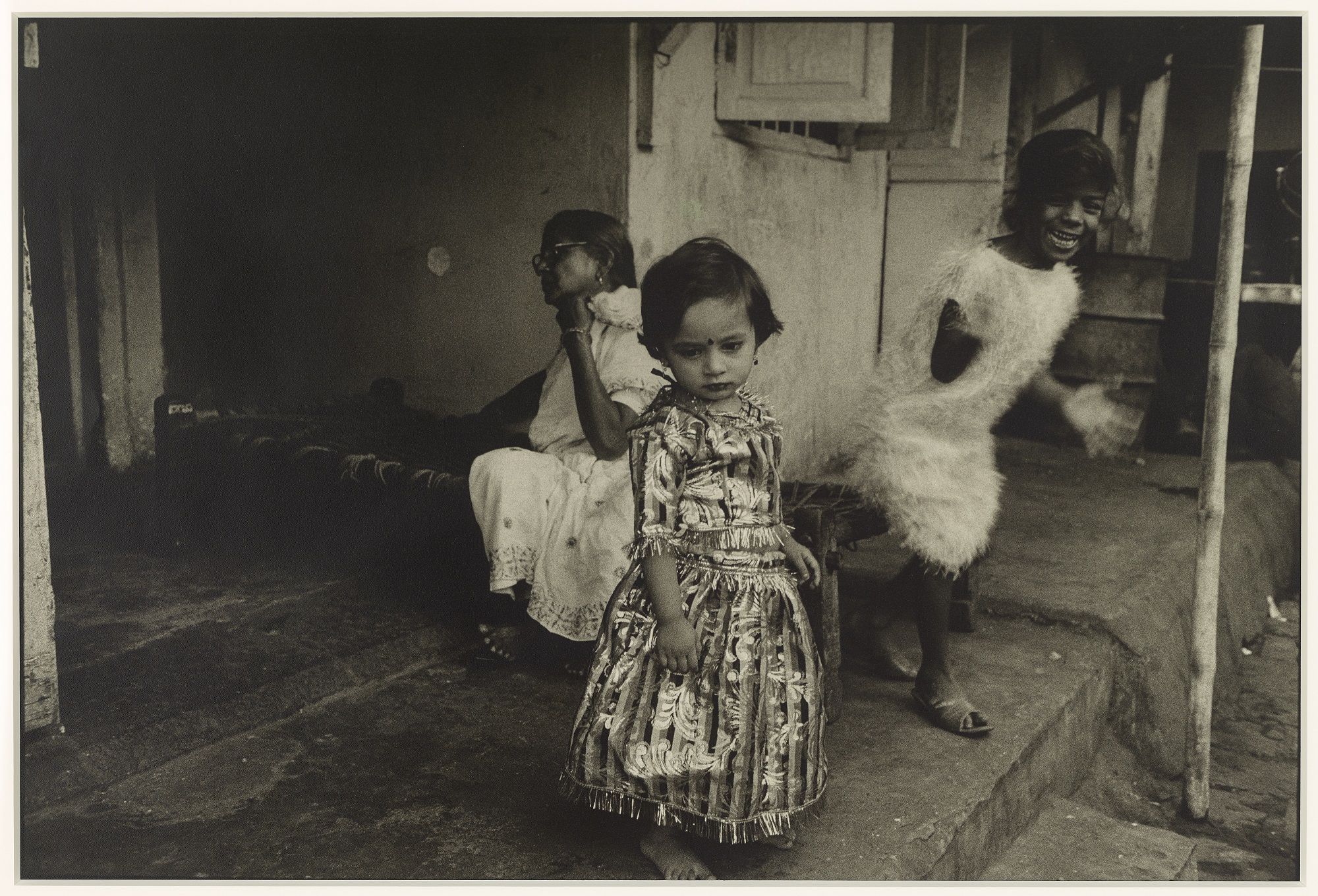
Ketaki Sheth, (b.1957, India), Portrait of Falak, 1990, silver gelatin print, Gift of Drs. Umesh and Sunanda Gaur
You then finish the loop and come to the Sheba Chhachhi work and that of course is not a documentary work; it comes from her last decade of more poetic compositions and installations. I wanted to create a contrast with this more imaginative composition, but also wanted to stay within the realm of landscape representation. Here we have a self-portrait, but interestingly, a portrait of self that uses reflections of or incorporates the landscape view. So, in a way this imaginary composition was just a way to contrast the experience for the viewer of seeing straight documentary, street photography and then this more composited image.
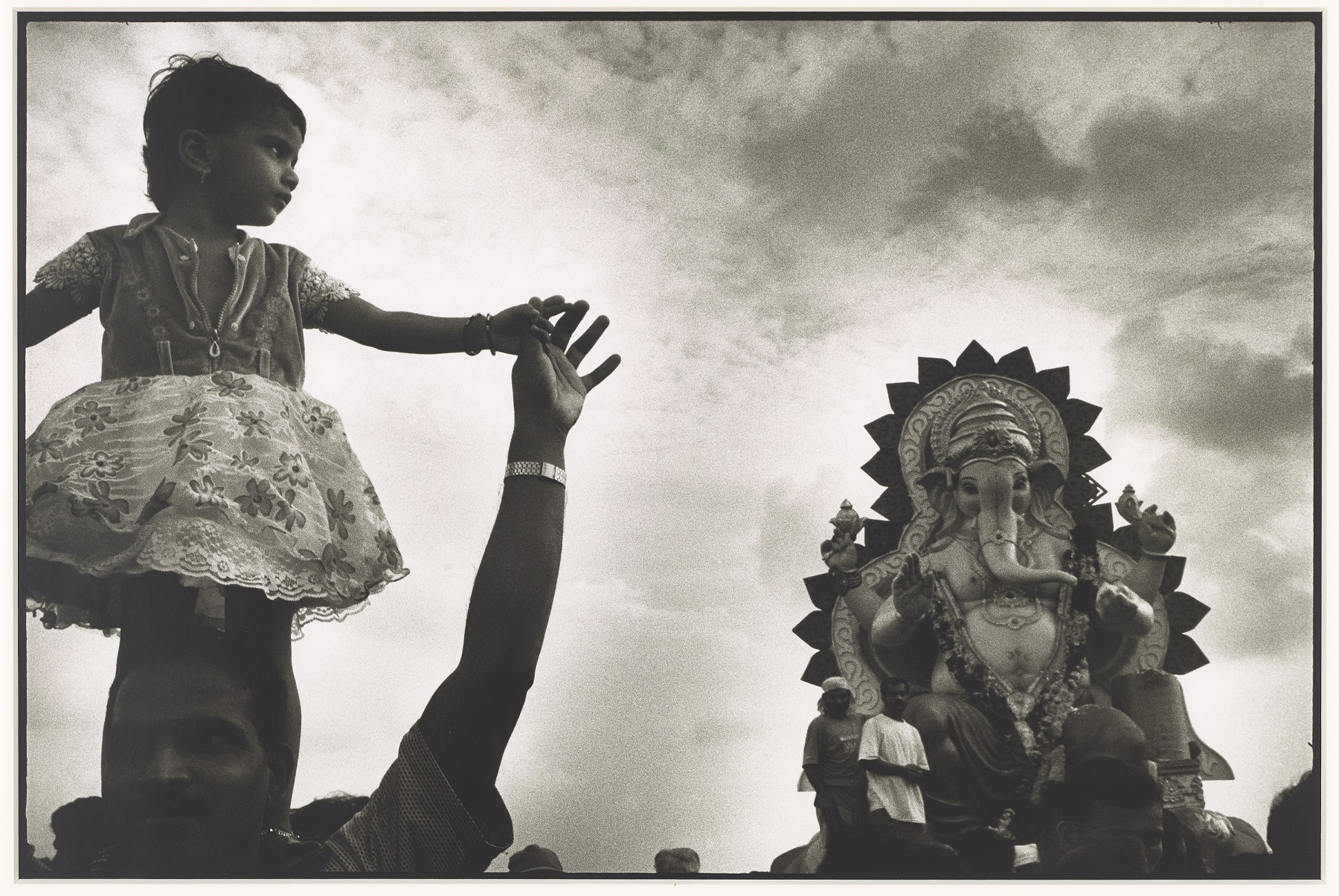
Ketaki Sheth, (b.1957, India), Girl at Ganpati immersion, Chowpatty, 2002, silver gelatin print, Gift of Drs. Umesh and Sunanda Gaur
Q. Since this an immersive show on water, exploring physical as well as symbolic aspects of its history and employment—how did you go about designing it? What was the experiential aspect that you wanted to highlight?
Carol: I hope it offers a more sensorial experience. I’ve devised a few games or devices for approaching the show, even though they perhaps only exist in my own mind. The Ravi Agarwal (work) occupies a very watery and dark expanse, moving on to a more lush environment, in spite of the clear signs of sewage that are seeping into this urban forest. But then it stands in contrast to the knives, which is a more overt and violent image. But as you go through the exhibition, you go from the sound of water to Sheba Chhachhi’s work, which has these fiery ochres and a majestic landscape. So, moving from a zone of wetness to dryness. There are these different sorts of trajectories that I hope move people through the experience of the exhibition.
With photography exhibitions it's important to be aware of, and perhaps try to be open and a bit creative, with image juxtapositions—I think that’s true of any exhibition, of course—and, unless it really calls for it, not sticking to a chronological framework. I don't want to treat them simply through an anthropological approach, as photographs of the Yamuna River, or photographs of the streets of Mumbai. So it's important to be conscious of what the artistic intent was, in order to find a way to read the images formally as well as for its content.
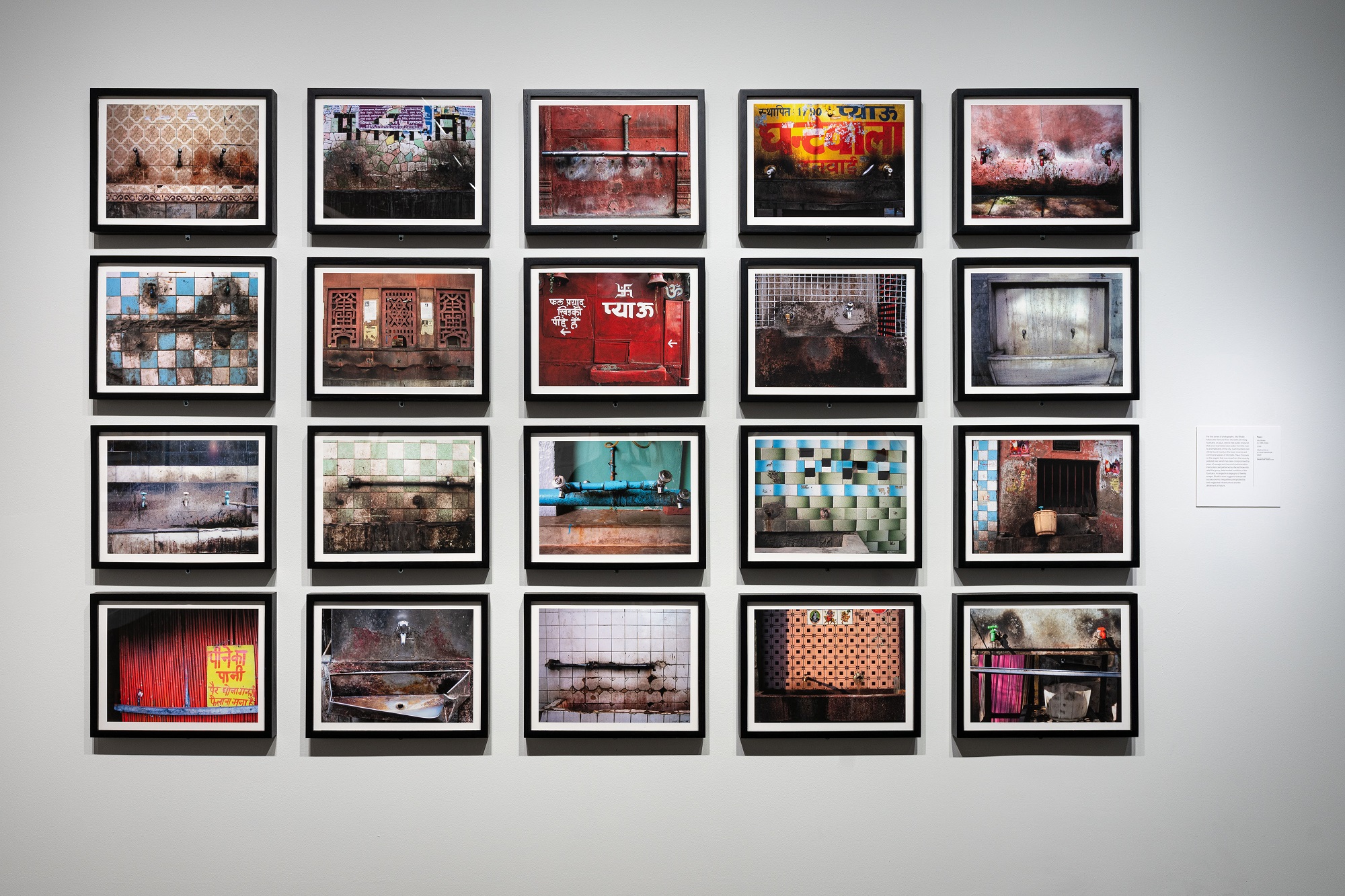
View of works by Atul Bhalla for Unstill Waters: Contemporary Photography from India, National Museum of Asian Art, Smithsonian Institution, Washington, D. C. Photo: Colleen Dugan
related articles

Conversations with friends
The Making of the Dhaka Art Summit: Behind the scenes with the Curator
February 01, 2023
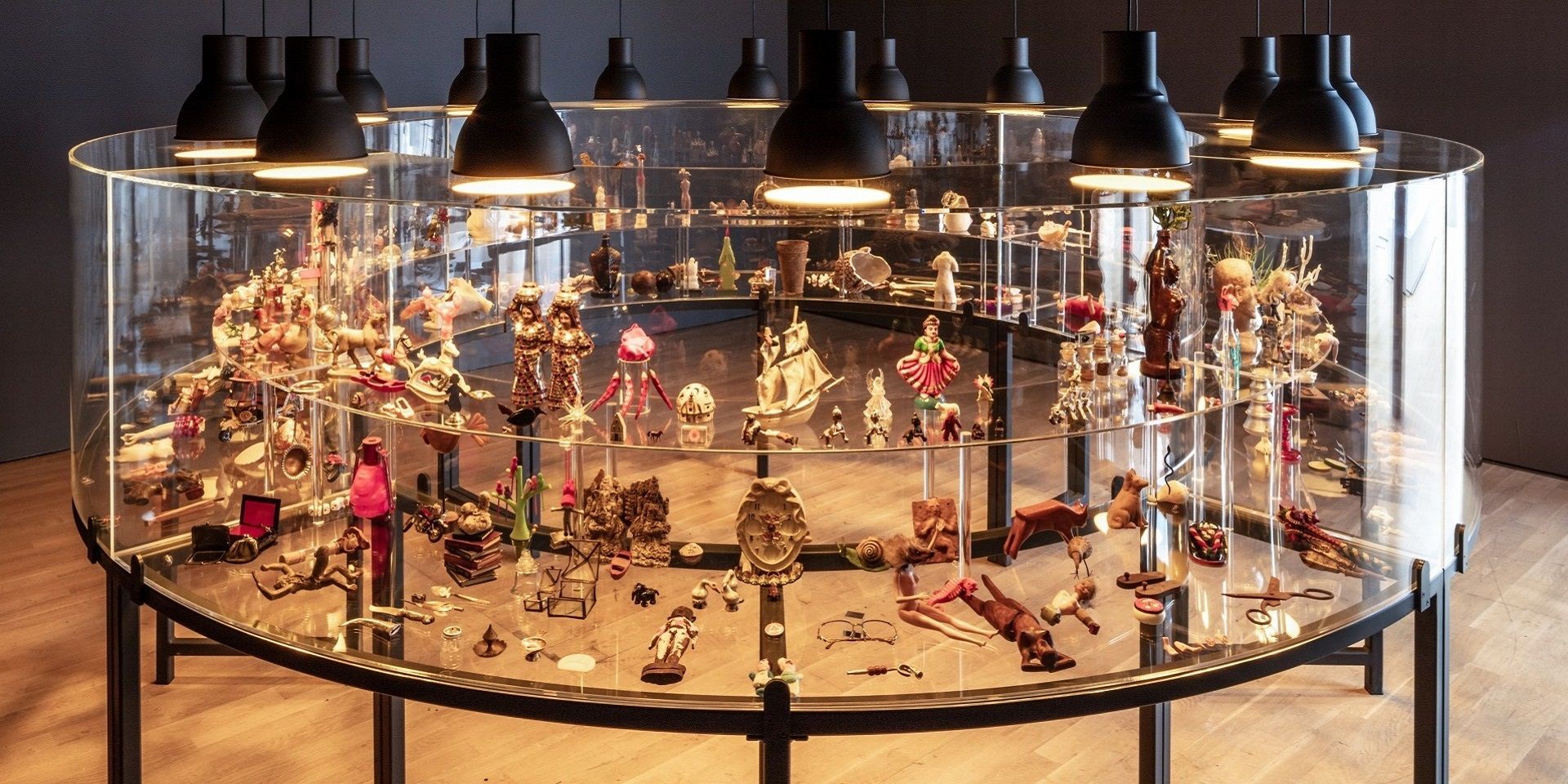
Conversations with Friends
Conscious Collecting with Asia Art Archive and Durjoy Rahman
Editorial Team
March 01, 2023

Conversations with Friends
Mysteries of Indian Art: A Conversation with Mamta Nainy
The Editorial Team
May 01, 2023

Conversations with Friends
Debra Diamond on Royal Udaipur painting at the Smithsonian
Ankan Kazi
June 01, 2023





